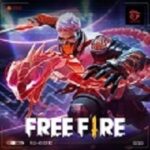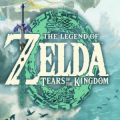Popular Now
Introduction
Free Fire, developed by Garena, has emerged as one of the most popular mobile battle royale games worldwide. With its fast-paced action, accessible mechanics, and engaging competitive nature, it has captivated millions of players globally. However, one aspect of the game that has generated significant controversy and discussion is the system of microtransactions within Free Fire. While microtransactions are not unique to Free Fire and are a common feature in many free-to-play games, their implementation and impact on the player experience have raised concerns.
In this article, we will delve deeply into the various issues surrounding microtransactions in Free Fire, exploring how they influence gameplay, the community, and the broader gaming industry. We'll also consider how Garena's microtransaction model affects both new and seasoned players, including how it impacts player behavior, spending habits, and overall enjoyment. This analysis will look at the business model, the psychology behind microtransactions, and how they might be shaping the future of mobile gaming.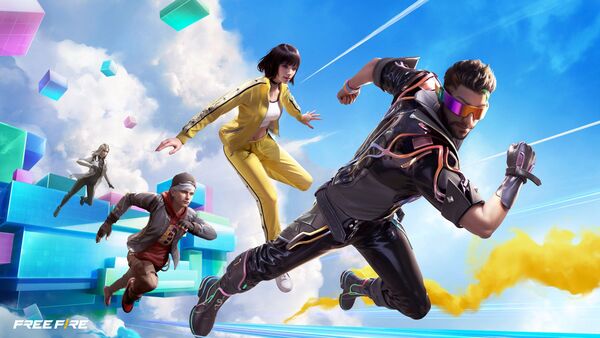
The Free-to-Play Model: A Double-Edged Sword
The Promise of Free-to-Play
Free Fire's success is largely due to its free-to-play model, which allows players to download and start playing the game without spending a dime. This model has made the game incredibly accessible, especially in countries with emerging mobile gaming markets. Players can jump into the action, play matches, and have fun without any mandatory purchases.
However, this free-to-play promise is not without its caveats. The game’s core business model relies heavily on microtransactions, encouraging players to spend real money on cosmetic items, characters, and in-game advantages. While many mobile games employ similar strategies, Free Fire’s reliance on these microtransactions is particularly prominent, which brings into question the overall fairness of the system, especially for players who do not wish to spend money.
The Freemium Business Model
The "freemium" business model used by Free Fire is designed to incentivize players to spend money gradually over time. Microtransactions are marketed as optional but often come with enticing rewards that make it difficult to resist spending. This model benefits both the players and the developers — the game remains free to access, while Garena profits through in-game purchases. However, the freemium model has led to a variety of issues that affect the balance and fairness of the gameplay experience.
Cosmetic Items and the Power of Skins
The Appeal of Cosmetic Customization
One of the major draws of microtransactions in Free Fire is the wide range of cosmetic items available for purchase. Skins for characters, weapons, and even the parachute are often featured in limited-time events and bundles. These cosmetic items do not affect gameplay directly, but they give players the ability to customize their experience and showcase their unique style. This personalization is appealing, as players want to stand out in a crowd or express their individual tastes.
However, this heavy reliance on cosmetic items raises questions about whether or not these purchases add true value to the game. The presence of premium skins can often create a divide between players who can afford to buy these items and those who cannot. While skins are not supposed to grant players in-game advantages, the prestige associated with these rare items can lead to an unintended social hierarchy within the game community.
The Psychological Effect of Skins and "Exclusivity"
Skins and other cosmetic items are often marketed as limited-time offers, making them seem exclusive and desirable. This taps into the psychology of scarcity, a tactic used to make players feel like they are missing out on something special if they don't make a purchase. As a result, players may feel compelled to spend money to obtain these items before they disappear, leading to increased spending.
This dynamic not only fuels a sense of exclusivity but also reinforces a culture where players who spend money on skins are viewed as having more status within the game, even though these items do not confer any actual advantages. The more skins a player acquires, the more they are perceived as a "high-level" player, despite their actual skill or experience.
Pay-to-Win Elements in Free Fire
The Debate on Pay-to-Win
One of the most contentious issues surrounding Free Fire is the extent to which microtransactions can create a "pay-to-win" environment. While Garena has made it clear that Free Fire is not a pay-to-win game, many players argue that certain in-game purchases give paying players an unfair advantage over free players. This is primarily due to the fact that microtransactions provide access to items, characters, and upgrades that can directly impact gameplay.
For example, characters with unique abilities can be purchased using real money or diamonds (the game’s premium currency), which can grant players an edge in combat situations. These abilities are not available to players who choose not to spend money, creating a significant imbalance. While these advantages do not always guarantee victory, they certainly contribute to a gameplay disparity between paying and non-paying players.
How Character Abilities Affect Gameplay
The issue becomes especially apparent when comparing characters like Alok, who has the ability to heal and speed up movement, with characters who do not possess such powers. Characters like Alok, who are obtained through in-game purchases or event participation, can drastically influence the outcome of a match, giving players who have access to these abilities a significant edge. This can be frustrating for free-to-play players, who may feel at a disadvantage simply because they cannot access the same characters or abilities.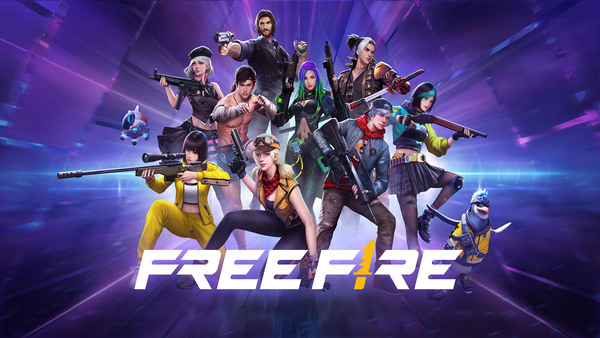
Loot Boxes and Gacha Mechanics: The Gamble of Microtransactions
The Appeal and Controversy of Loot Boxes
Loot boxes are another key component of Free Fire's microtransaction system. Players can purchase loot boxes, which contain random rewards such as skins, weapons, and characters. The allure of loot boxes is rooted in the excitement of potentially obtaining rare and powerful items. This randomized system taps into the gambling psychology, where players keep purchasing loot boxes in the hopes of getting a rare item or character.
However, this system has faced heavy criticism for promoting gambling-like behavior, particularly among younger players who may not fully understand the consequences of continuous spending. The randomness of loot box rewards means that players may not always get what they want, which can lead to frustration and, in some cases, financial strain.
The Odds and Transparency
One of the main criticisms of loot boxes in Free Fire is the lack of transparency regarding the odds of obtaining specific items. While some games have taken steps to disclose the drop rates of rare items, Free Fire has been slow to provide this information, leaving players uncertain about their chances of getting a specific item or character. This lack of clarity further fuels the debate around the ethics of loot box mechanics and their potential to exploit players.
The Community Impact: Inclusivity vs. Exclusivity
Divisions Among Players
The microtransaction model in Free Fire has contributed to a growing sense of division within the player base. Players who spend money to obtain rare skins, characters, and loot box items often enjoy a sense of exclusivity and prestige. However, this exclusivity creates a divide between players who can afford to spend money and those who cannot.
Non-paying players may feel excluded or disadvantaged, especially when they are up against opponents who have paid for in-game advantages. This can lead to frustration and resentment within the community, as it creates an environment where players' success is not solely based on skill but also on how much money they are willing to invest in the game.
The Social Hierarchy in Free Fire
As Free Fire continues to evolve, the social hierarchy within the game has become more apparent. Players with access to exclusive skins, characters, and abilities are often viewed as higher-status players, even if their skill level does not match their in-game assets. This has led to a perception that Free Fire is not just about playing to win but also about showcasing one's financial investment in the game.
The Impact on New Players
A Steep Learning Curve for Non-Paying Players
For new players entering Free Fire, the presence of microtransactions can create a steep learning curve. Initially, it may be unclear to new players that certain characters or items give advantages in battle. The game’s emphasis on paid characters and abilities may not be immediately obvious, which can lead to confusion or frustration when facing more experienced players with powerful abilities.
New players may feel compelled to spend money to compete at the same level as veteran players, adding to the pressure to "pay to win." This can alienate players who simply want to enjoy the game without feeling the need to constantly open their wallets. The combination of microtransactions and character-based advantages presents a challenge for those who prefer a more level playing field.
Garena’s Response to Microtransaction Concerns
Balancing Microtransactions with Gameplay
Garena has made efforts to address concerns regarding microtransactions by introducing more ways for non-paying players to earn in-game currency and rewards. Events, challenges, and daily missions have been introduced to provide opportunities for free players to obtain diamonds and other premium items. However, these efforts have not entirely alleviated the frustration felt by players who feel that the gap between paying and non-paying players is still too wide.
While Garena has attempted to make Free Fire more inclusive for all players, the fact remains that microtransactions are deeply embedded in the game’s economy, and their influence on gameplay is difficult to ignore.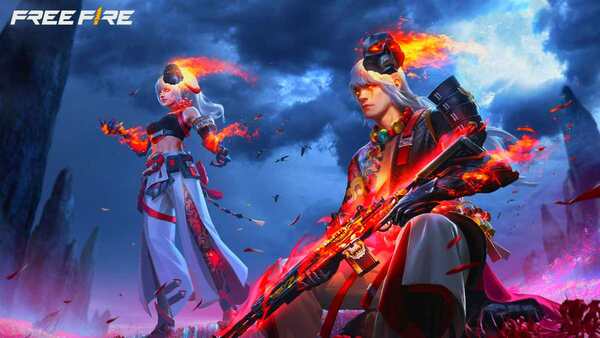
Potential for Future Changes
Garena’s future decisions regarding microtransactions will likely shape the long-term sustainability and fairness of Free Fire. As microtransactions continue to evolve, it will be crucial for Garena to find a balance between monetization and ensuring a fair and enjoyable experience for all players, regardless of whether they choose to spend money.
Conclusion: The Cost of Microtransactions in Free Fire
In conclusion, Free Fire’s microtransaction system has undoubtedly played a significant role in the game’s success. However, it has also raised critical issues regarding fairness, inclusivity, and player experience. While the game remains accessible to millions of players, the economic model in place creates a division between those who can afford to spend money and those who cannot. This division impacts gameplay, player behavior, and the overall enjoyment of the game, especially for non-paying players who feel disadvantaged.
As the game continues to evolve, it is clear that Garena will need to strike a delicate balance between maintaining its free-to-play model and addressing the growing concerns about the influence of microtransactions. Ultimately, the success of Free Fire will depend on how well it can integrate monetization while ensuring that players of all backgrounds can enjoy the game on equal footing.


